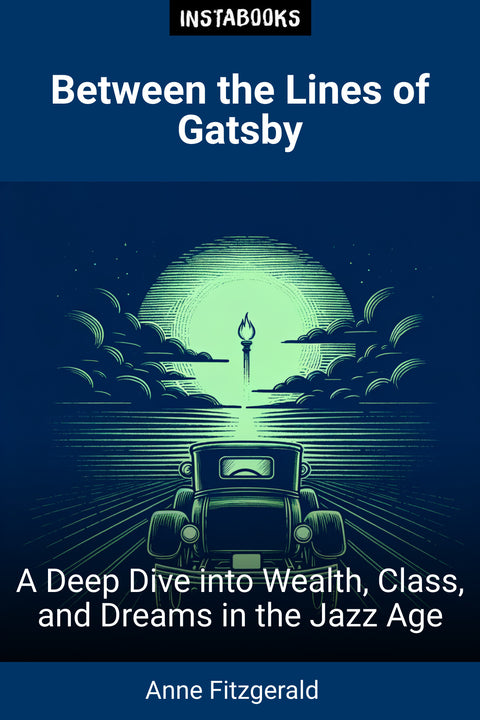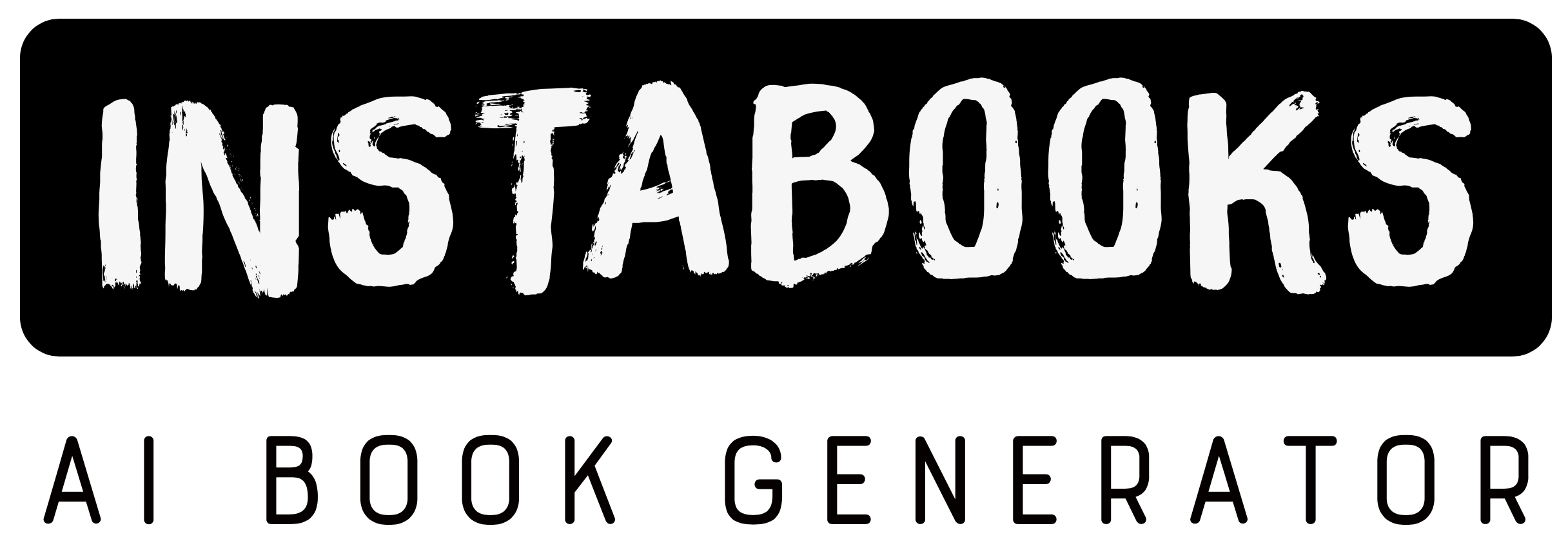
Between the Lines of Gatsby
A Deep Dive into Wealth, Class, and Dreams in the Jazz Age
Included:
✓ 200+ Page AI-Generated Book
✓ ePub eBook File — read on Kindle & Apple Books
✓ PDF Print File (Easy Printing)
✓ Word DOCX File (Easy Editing)
✓ Hi-Res Print-Ready Book Cover (No Logo Watermark)
✓ Full Commercial Use Rights — keep 100% of royalties
✓ Publish under your own Author Name
✓ Sell on Amazon KDP, IngramSpark, Lulu, Blurb & Gumroad to millions of readers worldwide
Explore the Enigma of The Great Gatsby
In <strong>Between the Lines of Gatsby</strong>, immerse yourself in a critical exploration of F. Scott Fitzgerald's timeless novel. This book goes beyond surface-level readings to unravel the complex themes of wealth, love, class, and the elusive American Dream. Set against the backdrop of the vibrant Jazz Age, this analysis provides readers with an informed lens to appreciate the subtleties of Fitzgerald's writing.
Dive Into the Themes
The book meticulously examines pivotal themes, such as:
- Wealth and Class: Discover how Fitzgerald portrays the divide between old and new money, using the contrasting settings of East Egg and West Egg to enhance the narrative.
- Love: Reflect on Gatsby's unfulfilled passion for Daisy Buchanan and the inherent complexities of love amidst societal pressures.
- The American Dream: Analyze the critical perspective on the American Dream, revealing the harsh realities faced by those striving to transcend their social standing.
Character Studies and Historical Context
Uncover comprehensive character studies that delve into the minds of:
- Jay Gatsby: A portrayal of Gatsby’s desperate quest for love and acceptance amidst the backdrop of wealth.
- Daisy Buchanan: Explore Daisy’s multifaceted character as a representation of unattainable dreams and societal expectations.
- Nick Carraway: Understand Nick’s role as the unreliable narrator, providing a critical view of the moral decay of the Jazz Age.
Additionally, readers will gain insight into the historical context of the 1920s, exploring the significance of the Jazz Age in shaping the novel's narrative and thematic concerns.
The Power of Symbolism
<strong>Between the Lines of Gatsby</strong> also highlights the potent symbols in the novel: the green light as a representation of unattainable dreams and the eyes of Doctor T.J. Eckleburg as a moral compass in a corrupt society. These symbols enrich the narrative, making it an engaging text for analysis.
Why Read This Book?
This book is essential for anyone wishing to deeply understand classic literature and the intricate layers of The Great Gatsby. With extensive research behind every chapter, readers will appreciate the careful considerations of historical context, theme, character, and symbolism, making <strong>Between the Lines of Gatsby</strong> a must-read for literature enthusiasts and scholars alike.
Table of Contents
1. The Essence of The American Dream- Definition and Origins
- The Dream in the Jazz Age
- Critique of the American Dream in Gatsby
2. Unpacking Wealth and Class Structures
- Old Money vs. New Money
- Social Hierarchies in The Great Gatsby
- Gatsby's Paradox of Wealth
3. Characters in the Spotlight: Jay Gatsby
- Gatsby's Transformation and Identity
- Romantic Ideals vs. Reality
- The Illusion of Success
4. Daisy Buchanan: The Symbol of Desire
- Character Analysis of Daisy
- The Role of Femininity in Gatsby's World
- Daisy's Relationship with Gatsby and Tom
5. Nick Carraway: The Observer's Perspective
- Nick as the Unreliable Narrator
- Moral Judgments in Nick's Narrative
- Nick's Transformation Throughout the Novel
6. The Historical Context of the Jazz Age
- Economic Boom and Social Change
- The Prohibition Era's Influence
- Cultural Shifts in 1920s America
7. Symbolism in The Great Gatsby
- The Green Light: A Beacon of Hope
- The Eyes of Doctor T.J. Eckleburg
- Colors as Symbolism in Gatsby's World
8. Love and Relationships: Analyzing the Complexities
- Love in a Materialistic Society
- The Illusion of Romantic Aspirations
- Incompatibilities among Characters in Love
9. The Role of the Setting
- East Egg vs. West Egg
- The Valley of Ashes: A Symbolic Landscape
- Parties and Their Cultural Significance
10. Literary Techniques Used in Fitzgerald's Writing
- Narrative Techniques Used in Gatsby
- Symbolism and Imagery in Writing
- Fitzgerald's Use of Language and Tone
11. Critical Reception and Interpretations
- Original Reception of Gatsby
- Modern Perspectives on the Novel
- Academic Critiques and Theories
12. Conclusions and Reflections
- Modern Relevance of Gatsby
- Lessons from The Great Gatsby
- Final Thoughts and Future Readings
Target Audience
This book is aimed at literature students, teachers, and classic literature enthusiasts seeking an in-depth analysis of The Great Gatsby's themes, characters, and historical context.
Key Takeaways
- Deep Understanding: Gain insights into the themes of wealth and class as portrayed by Fitzgerald.
- Symbolic Interpretations: Learn to interpret the various symbols that enrich the narrative.
- Character Analysis: Explore comprehensive analyses of key characters and their motivations.
- Historical Context: Understand the significance of the Jazz Age in shaping the novel's themes.
- Critical Perspectives: Engage with diverse academic interpretations of the text.
